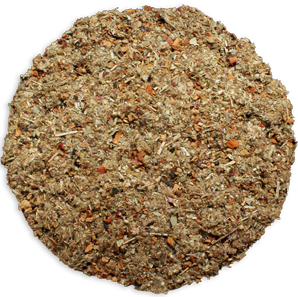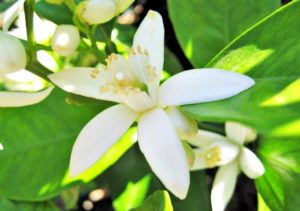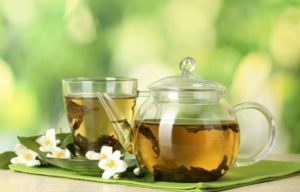Actúa como auxiliar en los síntomas de gripa, descongestionante de las vías respiratorias y expectorante.

A base de: Pulmonaria Pulmonaria officinalis (Alivia la bronquitis, enfisema pulmonar y faringitis. Su alto contenido en mucílagos y alantoína protegen las mucosas de los conductos respiratorios, y las saponinas le confieren acción expectorante), Sauco Flor Sambucus (Por su capacidad antioxidante y antiviral ayuda a combatir resfriados y la gripe. Mejora los síntomas como fiebre, dolor de cabeza, o congestión nasal y es expectorante), Gordolobo Verbascum thapsus (Se utiliza para tratar afecciones relacionadas con el aparato respiratorio, contrarresta síntomas y agravamientos de los resfriados y gripes, alivia dolores de garganta, amigdalitis, anginas y catarros. Es un potente expectorante y ayuda en problemas como asma y alergias), Eucalipto Eucalyptus (Alivia resfriados y afecciones respiratorias, ayuda a descongestionar los pulmones y estimula el funcionamiento del sistema inmune), Tejocote Crataegus mexicana (Empleado en enfermedades respiratorias como la tos, pulmonía, bronquitis, resfrío y dolor del pulmón), Bugambilia Bougainvillea glabra (Auxiliar en las afecciones respiratorias como tos, asma, bronquitis, gripa y tosferina) y Cuatecomate Crescentia alata Kunth (La pulpa del fruto se usa contra asma, bronquitis, para fortalecer los pulmones y padecimientos de tos).
Tomar 1 o 3 tazas al día antes de cada alimento. Este producto no debe ser sustituido por ninguna dieta variada ni tampoco sustituye a ningún medicamento.

Siempre es bueno estar informado al 100% y consultar con tu médico de confianza antes de tomar cualquier suplemento.
Producto 100% natural, su uso está destinado al consumo como alimento.
EL CONSUMO DE ESTE PRODUCTO ES RESPONSABILIDAD DE QUIEN LO RECOMIENDA Y DE QUIEN LO USA
REFERENCIAS
Krzyzanowska-Kowalczyk J, Kolodziejczyk-Czepas J, Kowalczyk M, Pecio Ł, Nowak P, Stochmal A.J Agric Food Chem. 2017 May 17;65(19):3827-3834. doi: 10.1021/acs.jafc.7b00718. Epub 2017 May 4.PMID: 28453265
Our work reveals that the aerial parts of Pulmonaria officinalis L. are a new source of yunnaneic acid B. We studied antioxidant activity and cytotoxicity of this compound (1-50 mug/mL) and its contents in various plant extracts. This is the first study confirming t …
Hawkins J, Baker C, Cherry L, Dunne E.Complement Ther Med. 2019 Feb;42:361-365. doi: 10.1016/j.ctim.2018.12.004. Epub 2018 Dec 18.PMID: 30670267
Due to concerns about safety and efficacy, there is a demand for an alternative solution. Black elderberry (Sambucus nigra) has been used to treat cold and flu symptoms, but there are no large-scale studies or meta-analyses. …
Khan SA, Dastagir G, Uza NU, Muhammad A, Ullah R.Microsc Res Tech. 2020 Jun;83(6):636-646. doi: 10.1002/jemt.23454. Epub 2020 Feb 6.PMID: 32027460
The present study was conducted on characterization of morpho-anatomical, phytochemical, and bio-elemental analysis of root, stem, and leaf of Verbascum thapsus. Morphologically Verbascum is a biennial plant that flowers for a month and a half in mid- to late …
Elaissi A, Rouis Z, Salem NA, Mabrouk S, ben Salem Y, Salah KB, Aouni M, Farhat F, Chemli R, Harzallah-Skhiri F, Khouja ML.BMC Complement Altern Med. 2012 Jun 28;12:81. doi: 10.1186/1472-6882-12-81.PMID: 22742534 Free PMC article.
BACKGROUND: In 1957, Tunisia introduced 117 species of Eucalyptus; they have been used as fire wood, for the production of mine wood and to fight erosion. Actually, Eucalyptus essential oil is traditionally used to treat respiratory tract disorders such as pharyngit …
Saleem H, Usman A, Mahomoodally MF, Ahemad N.J Ethnopharmacol. 2021 Feb 10;266:113356. doi: 10.1016/j.jep.2020.113356. Epub 2020 Sep 19.PMID: 32956758
ETHNOPHARMACOLOGICAL RELEVANCE: Bougainvillea glabra (Choisy). (Family: Nyctinaginacea) is a valuable ornamental plant with culinary uses and also utilized in traditional medicine for treating common ailments. …Phytochemical analysis of different parts of B. gl …
Corrales CV, Lebrun M, Vaillant F, Madec MN, Lortal S, Pérez AM, Fliedel G.Food Res Int. 2017 Jun;96:113-120. doi: 10.1016/j.foodres.2017.03.009. Epub 2017 Mar 11.PMID: 28528090
Jicaro seeds (Crescentia alata) are widely consumed in Central America, primarily as a popular tasty and nutritious beverage called «horchata». …


